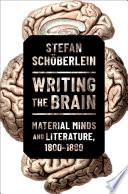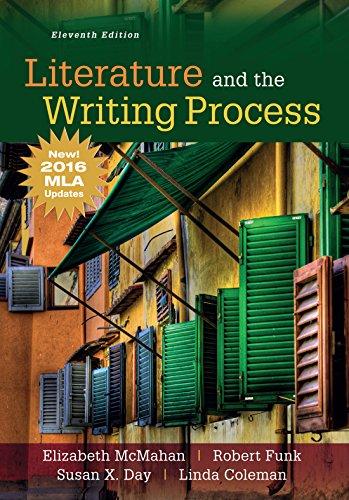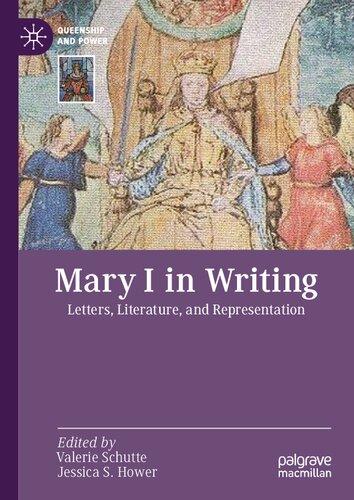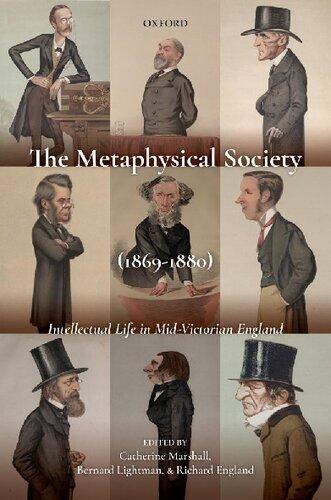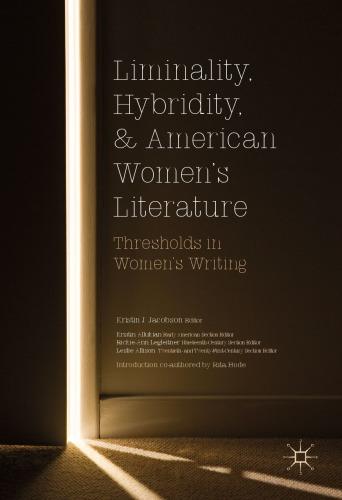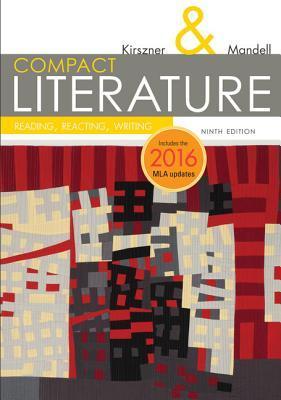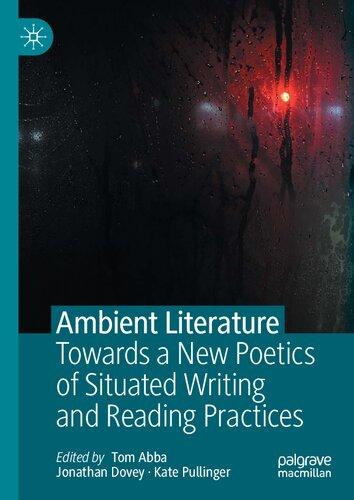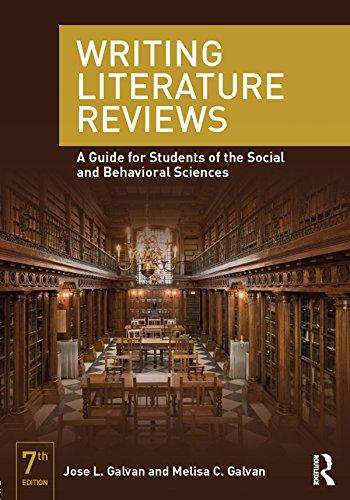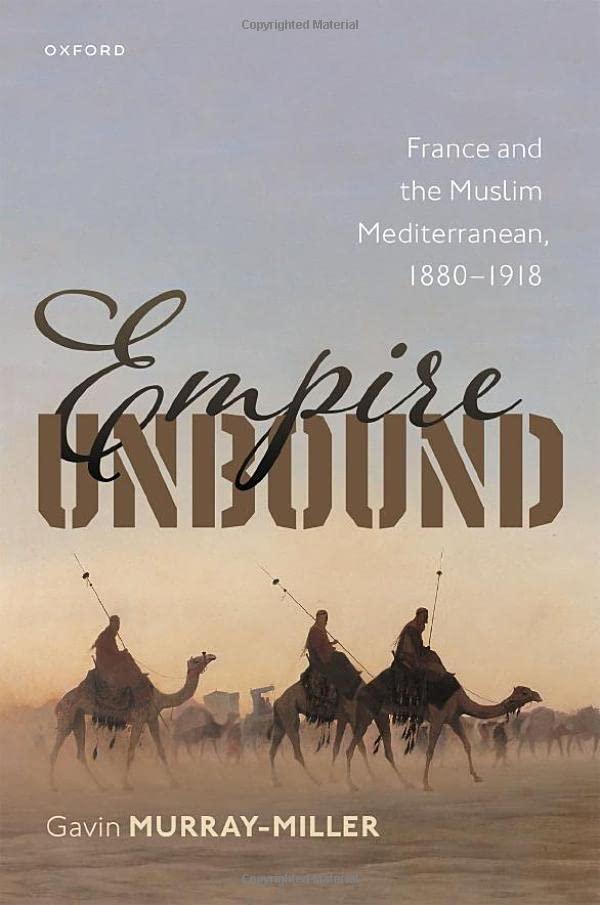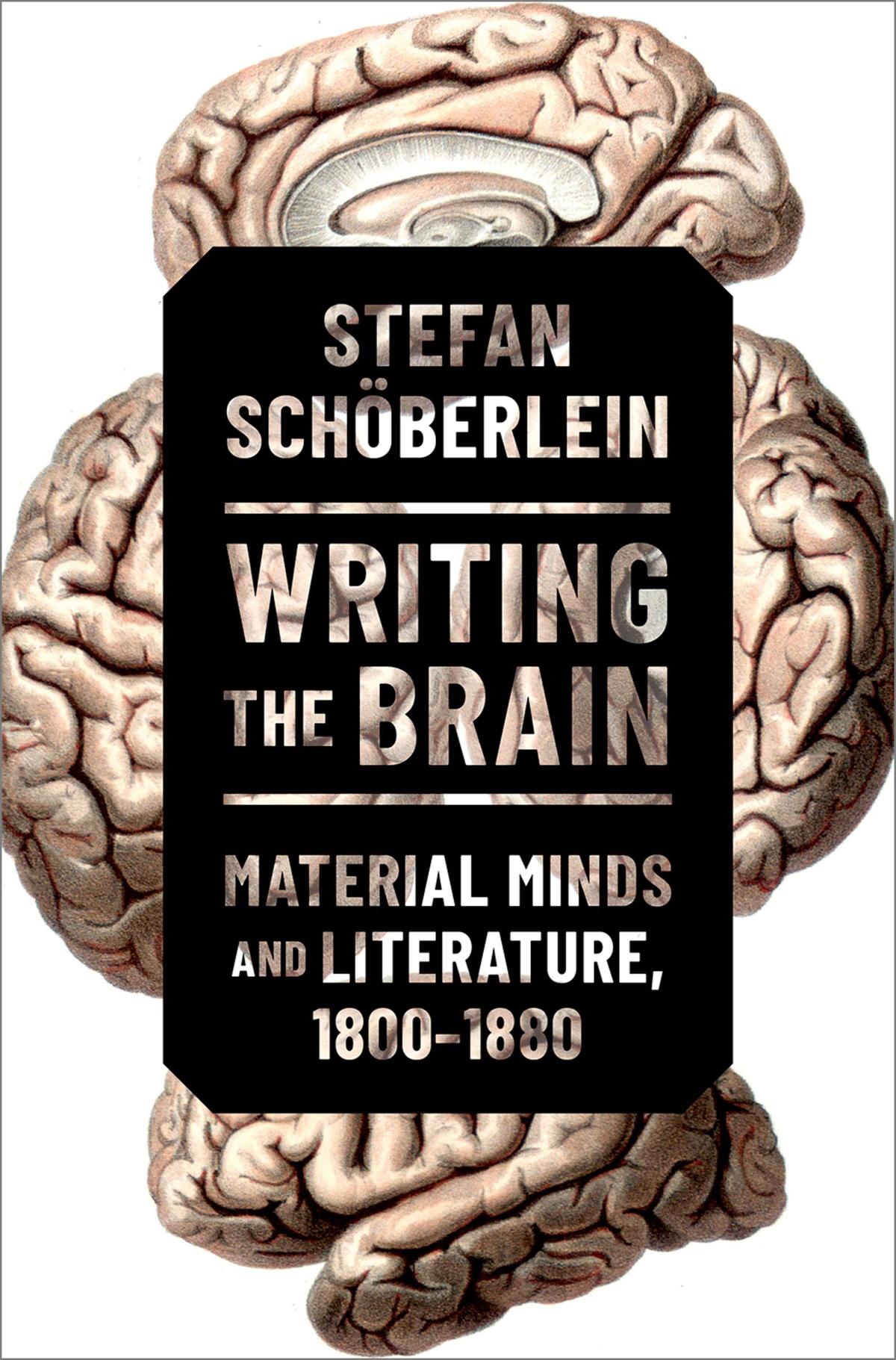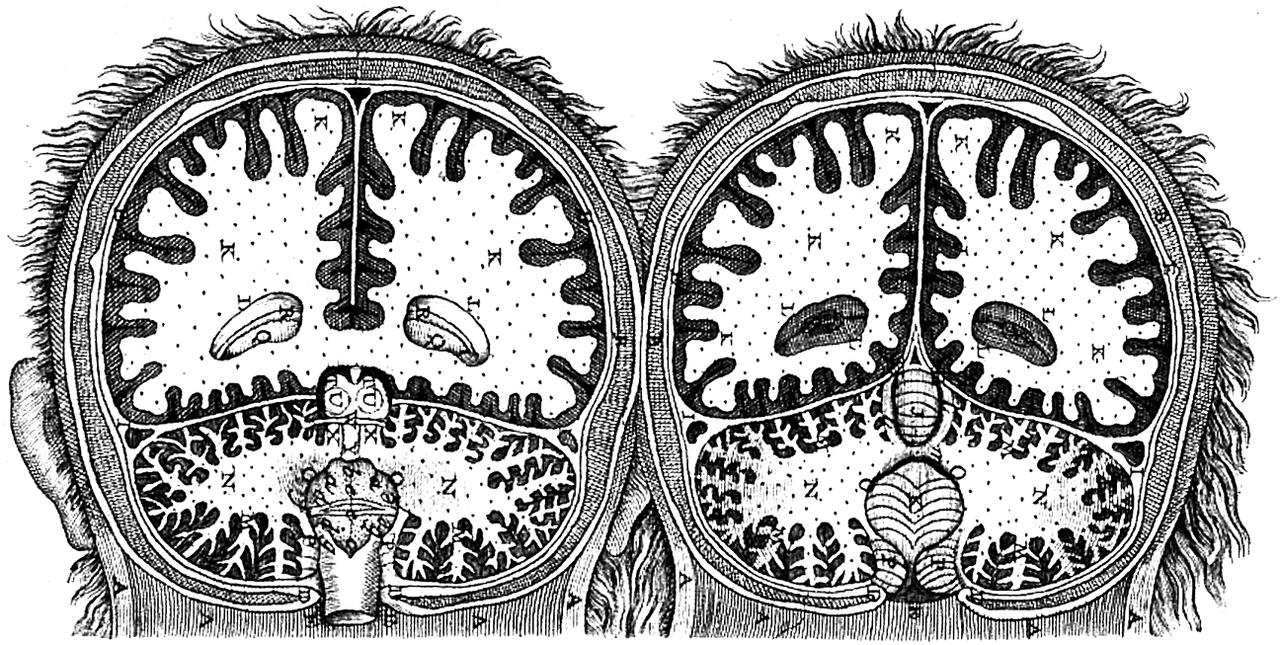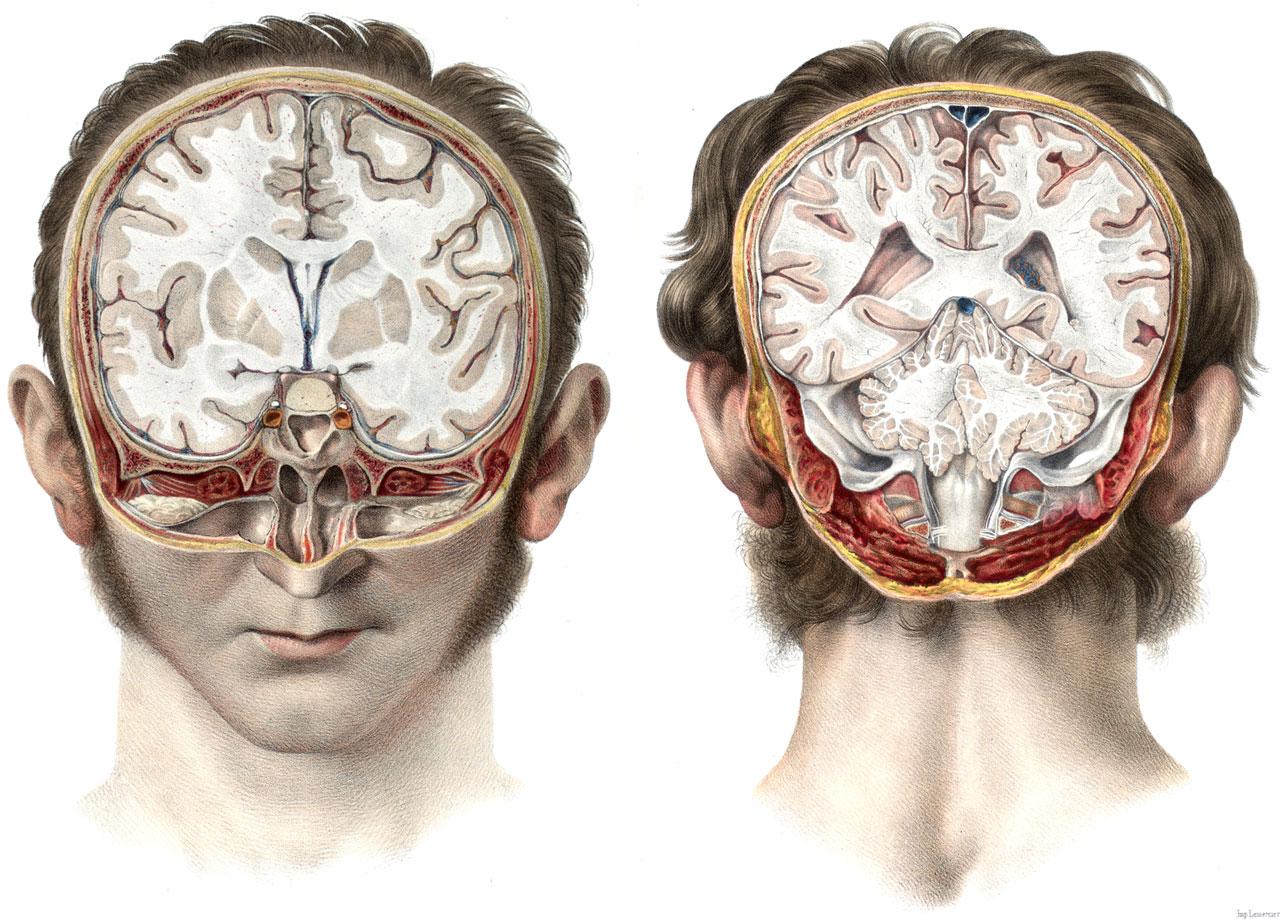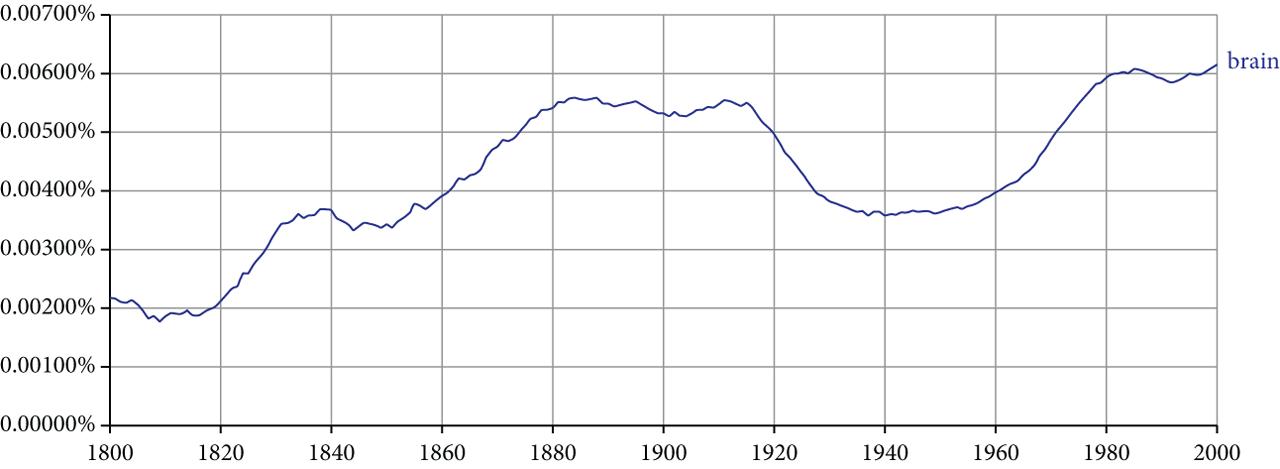Writing the Brain
MaterialMinds andLiterature, 1800–1880
STEFAN SCHÖBERLEIN
Oxford University Press is a department of the University of Oxford. It furthers the University’s objective of excellence in research, scholarship, and education by publishing worldwide. Oxford is a registered trade mark of Oxford University Press in the UK and certain other countries.
Published in the United States of America by Oxford University Press 198 Madison Avenue, New York, NY 10016, United States of America.
© Oxford University Press 2023
All rights reserved. No part of this publication may be reproduced, stored in a retrieval system, or transmitted, in any form or by any means, without the prior permission in writing of Oxford University Press, or as expressly permitted by law, by license, or under terms agreed with the appropriate reproduction rights organization. Inquiries concerning reproduction outside the scope of the above should be sent to the Rights Department, Oxford University Press, at the address above.
You must not circulate this work in any other form and you must impose this same condition on any acquirer.
CIP data is on file at the Library of Congress
ISBN 978–0–19–769368–1
eISBN 978–0–19–769369–8
DOI: 10.1093/oso/9780197693681.001.0001
DedicatedtoEdandGarrett, inmanywaysthebrainsofthisoperation
In the first half of the nineteenth century, a transformation took place in the natural sciences that, in its very nature as well as in the enormity of the revolution it triggered, may only be compared to that which had . . . come about in the late seventeenth century . . . and fulminated into the Critique ofPure Reason. . . .
Experiments on the body generated insights about the soul; in the very midst of the realm of physiology, we found ourselves face to face with the psyche: a knot was discovered that tightly bound these two modes of being to one another and, from that point onward, careful fingers could reach into the mysterious darkness of the mind. Thus, we confronted a moment of outrageous novelty in the history of science: the psyche, pneuma, that which is above and beyond mere things, the unfathomable itself, became flesh and took up residence within us.
Gottfried Benn, 1910
Contents
Acknowledgments
The First Century of the Brain: An Introduction
1. Nature’s Mind and Mind’s Nature: Romantic Cognition Between H arp and Atom
Harp Strings
Mind-Strings
Mind-Matter
Mind-Atoms
2. Split Brains, Doubled Minds: The Gothic’s Bicameral Vision
The Sleepers
Dialoging the Self
Hemispheric Voices
Master-Minds
3. Skulls and Society: Reading the Mind as a Multi-Organ Entity
Brain Damage
Phrenology as Sociology
Phrenological Victorianism
Phrenological Americanism
Phrenology’s Real
4. Cranial Reconstruction: Racialized Brains and the Psychometric R eal
Uncommon Minds
Great Brains
A Cranial Case Study
Realism as Psychometry
5. Rattle-Brained: Insanity as Material Metacognition
You, Me, Brain
Metempsychosis as Metacognition
Insanity as Pop Culture
Psychosis as Metacognition
6. The Telegraphed Brain: Wires as Proto-Neurons
Thoughts on Wires
Telegraphed Minds
Introspective Brain-Machines
Afterword References Index
Acknowledgments
Like a phrenological skull’s innumerable bumps and grooves, many people have left their impressions on this book that deserve to be acknowledged. Writing the Brain saw its beginnings as a doctoral dissertation at the University of Iowa (2018), and I would like to thank both the institution as well as the many people who had their hand in turning my cranial confusions into a somewhat coherent book: Loren Glass, Laura Rigal, John Durham Peters, Ed Folsom, and Garrett Stewart. I’m beyond grateful, in particular, to Ed and Garrett, to whom this book is dedicated. This “ill-form’d offspring of my feeble brain” would have never seen the light of day without their encouragement, feedback, and support during my years at Iowa and beyond. John Durham Peters, too, deserves a special “Danke,” as does Blake Bronson-Bartlett, for always being willing to chat about media obscura and nineteenth-century oddities.
Thanks are also due to the many kind colleagues, students, and mentors that I had the pleasure to work with at the University of Iowa and Marshall University, as well as my many wonderful collaborators elsewhere. No matter how incomplete, this list has to include: Allison Carey, Kristen Lillvis, Hilton Córdoba, Victor Fet, Kateryna Schray (Данке), Chris White, Teri Reynoso, Kevin McMullen, Stephanie M. Blalock, Jason Stacy (master of the interface), Margee Miller, Naomi Greyser, Barbara Eckstein, Kathleen Diffley, Kembrew McLeod, Kenneth M. Price, Nicole Gray, Matt Cohen, Walter Grünzweig, Ted Widmer, and Zachary Turpin. I would also like to thank my new colleagues at Texas A&M University–Central Texas for welcoming me so warmly during the final weeks of this book’s lengthy gestation.
The original spark for Writing the Brain came during conversations about Emily Dickinson’s anatomical poetry with my
wife, Arianna, who is truly a Renaissance person when it comes to all things “brain.” Graziemille. Our cats, Bernie and Hux, sat idly by during the writing of this book but deserve thanks nonetheless.
Of course, any piece of scholarship on a historical period is only as good as the sources its author could access. Without the untiring work of the Interlibrary Loan departments at the University of Iowa, Marshall University, and Texas A&M University–Central Texas this book would have been much thinner. Additionally, digital archives including the Hathi Trust, Chronicling America, the Walt Whitman Archive, the Edgar Allan Poe Society website, the Charles Brockden Brown Electronic Archive, and the Internet Archive (among others) proved indispensable. May we never have to miss tools like these!
I would also like to gratefully acknowledge the journals that have given me permission to reprint elements of previously published articles, mainly my 2014 piece “Insane in the Membrane: Emily Dickinson Dissecting Brains” from The Emily Dickinson Journal (24, no. 2 [2015]: 46–70), which forms the foundation for Chapter 5, as well as my “Tapping the Wire: A Telegraphic Discourse,” previously published in American Literature (88, no. 2 [2016]: 269–300) and adapted into sections of Chapter 6. Additionally, arguments and excerpts of readings from Chapters 1 and 6 have found their way into a German essay (“Medien der Begeisterung: Das Gehirn als technik- und literaturhistorisches Phänomen”), published in Jahrbuch für Technikphilosophie (2023: 17–34). All of these chapters have profited greatly from my respective anonymous reviewers as well as the assistance of journal editors and managing editors.
Finally, thanks are due to Hannah Doyle and Madison Zickgraf at Oxford University Press, as well as the editorial team at Newgen. This project has immensely benefited from two incredibly generous but anonymous reviewers. I am beyond grateful for their support of my work and their insightful comments have undoubtedly made WritingtheBraina better book.
From the bottom of my brain: thank you, all.
The First Century of the Brain An Introduction
On January 23, 1866, the venerable physicians of the New Jersey Medical Society, the oldest organization of its kind in the United States, assembled in New Brunswick to celebrate their centennial. The occasion called for pathos. So before the society ended the first day of its meeting by “march[ing] in procession to Greer’s Hall for dinner” (TransactionsoftheMedicalSociety 1866, 10), its president, Dr. Abraham Coles (1813–1891), stepped up to recite a poem. Skimming over the more than seventy pages of the published version, one can imagine the growling stomachs of the audience. But the topic of Coles’s composition allowed for no brevity: He was reciting a hymn on the physiological grandeur of human anatomy. Titled “The Microcosm,” the poem celebrates the human body as a model of earthly perfectibility; and, like “man” dominating creation, his own nature is dominated by a quite marvelous organ—the “big and billowy and powerful brain” (Coles 1866, 21):
Here mounted, standing on the topmost towers,
Up to the roof of this high dome of ours, With the Mind’s Organ in our hands, what new Secrets of structure strike th’ astonished view?
A weird, and wonderful, and fragile mass
Of white and gray deserted now, alas!
All knowledge quite razed out; no trace
Of things which were: now mourns each happy place, Where frolicked once the Children of the Mind;
Of all the number, not one left behind. (Coles 1866, 38)
One has to wonder what the performance of these choppy verses sounded like. Did Coles, an accomplished church hymnist on the side, deliver them with the appropriate amount of pathos for the
occasion? We might imagine him with outstretched, cupped hands as if he were offering up an actual brain for his audience to inspect.
Pathos aside, there is something remarkable about this congregation of 275 renowned physicians attending a service celebrating the “packed and folded pulp of brain” (Coles 1866, 42). For a medical society older than the United States itself, and a profession that proudly harkened back to the days of heathen Galen, to consider this organ with an antiquity of millions of years “weird, and wonderful” and marvel at its “new / Secrets of structure,” something rather groundbreaking must have happened. And indeed, it had: “The nineteenth century witnessed the establishment of neuroscience as a discipline” (Stiles, Finger, and Boller 2013, vii), and especially “early decades of the nineteenth century [saw] unprecedented collaborations between literature and science” on issues relating to the brain (Stiles 2019, 372). Within Coles’s lifetime, the brain had morphed from a passive, inert tabula rasa temporarily inhabited by souls and animal spirits to a material system that creates mind—a “Mind’s Organ” (Coles again) whose anatomical structure enables, limits, and defines the thinking self. What the brain offered up for the audience’s examination was essentially a material act of introspection: In front of the doctor was a roomful of thinking brains marveling that a brain could possibly produce thought. The tools for this marvel were supplied by eager anatomists, and their findings can be observed in scientific and literary writing alike.
And indeed, much of the fascination of the nineteenth century for the brain is, if not flat-out determined by, then at least precipitated by the invention of actual tools and techniques. The craniologists Gall and Spurzheim had invented a way of hardening brain specimens in alcohol, enabling the doctors to extract individual fibers and centers, and thus leading them to conceptualize the brain as distinct systems and structures, not a uniform mold of simple matter (Wickens 2014, 138). As a result, the number of neuropathology autopsies increased, and dissection kits became mass-produced and progressively more standardized (McCampbell 2017). The newly invented stereoscope turned eighteenth-century sensationalism on
its head by emphasizing the brain’s role in visual apperception1 before it became a vessel for mind-tourism and pornography (Cahan 1993, 178). And by the third decade of the nineteenth century (Sing er 2011, 330), microscopes had become powerful enough to reveal how complex nervous matter truly was and how far removed it was from notions of gray matter as passive clay, hollow hallways, or primordial jelly. In tandem, technological advances of the age replaced Enlightenment metaphors (tabulae rasae, corridors, strings, musical notes) in discussions about the brain with the language of atoms, batteries, and telegraph wires—ideas that emphasize a force within, not without.
Not only did the means to analyze the brain change, but so did the scope for such endeavors. From the 1800s onward, the number of specimens available to anatomically inclined physicians increased dramatically: With “lunacy” defined as a medical problem by the late eighteenth century, asylums for the insane sprang up all around Europe in the early 1800s (and twenty to thirty years later in the United States, often as a reaction against European standards of therapy and care) and supplied the basis for clinical psychiatry, comparative psychology, and (via postmortems) neuropsychological theories that tied behavioral anomalies to observable brain anomalies. In a similar vein, practices like medical grave robbing, dissection as a means of humiliating executed felons, and the system of slavery, which disallowed significant populations ownership of their bodies and brains (see Sappol 2002; Hutton 201 5; Richardson 2009), enabled anatomy’s rise to prominence at the dawn of the nineteenth century. Training followed suit: Within years, anatomy was a common subject not only in colleges (Rothstein 198 7) but in secondary schools (Powers 1920, 46). Quickly, information on the brain became ample, and its many experts were optimistic about their ability to decipher the exact relationship between psyche and cerebrum.
And their results were, by any standard, marvelous. Had Dr. Coles’s father ever looked for a drawing of the human brain, he may have found something like this:
Figure 1 Illustration from 1751 of a cranial cross section (Diderot and d’Alembert 2017, 18:3:15).
Coles himself, on the other hand, would have encountered images that look much closer to how we know the organ today:
Figure 2 Illustration of a cranial cross section (Bourgery and Jacob 1844, 303).
The point here, of course, is not that one illustration was clearly performed by a more accomplished artist, but that eighteenthcentury anatomy had comparatively little to say about what was within a brain. The same encyclopedia that supplies the 1751 illustration also features stunningly detailed views of the cerebrum, but all detail is reserved for depictions from without. Other intracranial artworks in the volume show hollowed-out skulls with certain veins and nerves drawn in, but, in general, the mass of the brain was just that: mere mass. Its internal structure was only important as far as it hosted the occasional minute “organ”—like Descartes’s pineal gland2—often depicted as suspended in what may functionally be akin to empty space or a bucket of water.
The 1844 illustration, on the other hand, clearly shows concern about gray versus white matter, individual lobes and convolutions
(and their slight hemispheric differences), and the exact topography of its fissures. If one looks at the results of the mapping of the brain by nineteenth-century anatomists, it becomes clear why the terra incognita of the 1751 drawing had to recede. In just the first half of the nineteenth century, we find the first descriptions/namings of the midbrain, substantia nigra, Broca’s area, cavum vergae, fasciculus gracilis, respiratory center, claustrum, cingular gyrus, central sulcus, Schwann cells, and many others, as well as anatomical arguments for functional differences between lateral and medial geniculate as well as the dorsal and ventral roots of the spinal cord, and explanations for the role of the cerebellum in motor function. With naming and differentiating also came a drive to hypothesize function, resulting, in turn, in a functional particularization of the mind generated from such distinct structures, organs, and systems within the brain.
If one is inclined to hunt for epistemological breaks or ontological shifts, the mapping of the brain certainly qualifies. Whereas the 1751 encyclopedia (Figure 1) still had to endure public outrage and censorship over its uncouth depiction of human nature, by the time of Coles’s centennial versifications, lumpy brains had become a topic for polite conversation and the occasional celebratory poem. In the early nineteenth century, as Robert Young rightly observes, the understanding of the human psyche moved away from philosophical “epistemology” and began “its close relations with neurophysiology” (Young 1970, 190). But epistemology still has a way of creeping in, and even this “new” brain was far from safe. As Alfred Whitehead (from a 1920s perspective) notes:
During the seventeenth century there evolved the scheme of scientific ideas which has dominated ever since. It involves a fundamental duality, with material on the one hand, and on the other hand mind. In between there lie the concepts of life, organism, function, instantaneous reality, interaction, order of nature, which collectively form the Achilles heel of the whole system. (1953, 71)
The anatomical brain science of the early 1800s—after the mind had abandoned abstract philosophy for biology and before it would
rekindle its love for dualism via modern psychology (then as primarily a methodological dualism)—was all Achilles heel, a potentially fatal weak spot to all notions of metaphysical minds. Stripped down to its “pulp,” the “new” biological mind presented its owners with a number of quandaries about free will, the (im)mortality of the self, the dominance of mind over body, selfcontrol, and rationality. There was much to ponder.
While “the localization of mental functions was not a generally accepted fact for a long time after its inception,” Michael Hagner notes, “it had such an impact that everyone had to respond to it” (2000, 10, translation mine). Consequently, debates about brains were by no means confined to academic journals or physicians’ meetings. The 1800s, as Sonja Boos reminds us, was a time “when the boundaries between the sciences and the humanities and their respective representational modes were far more fluid than they are today” (2021, 213). A glance at the totality of texts of the century currently digitized by the corporate hive mind of Google clearly shows the scope of the century’s brain fever:
Figure 3 Relative usage of the word “brain” in the English corpus of Google Books for the years 1800 to 2000 (smoothing value of 5, Google Ngram Viewer).
Between 1800 and 1880 cerebral talk almost doubled in print (before stagnating, and then dropping during the height of psychoanalysis).3 The brain was trending, and it did so in England and the United States alike.
Both the science and literature of the day fluidly moved back and forth across the Atlantic, with British mind-materialists fleeing to the United States, American heroic alienism being debated in the United Kingdom, and neurophysiological research as well as spectacular anecdotes about psychiatric patients circulating with little to no transmission lag in the periodical spheres of both nations. If you wanted to read about a man surviving cerebral impalement or a woman’s sleepwalking brain compelling her to drown herself, you could do so with equal ease in Sheffield or Philadelphia. Essentially nonexistent transatlantic copyright restrictions and a culture of reprinting only intensified scientific and popular discourse about the brain on both sides of the pond.4 Of course, English-language works rather quickly spread through other (Western) nations as well, but the selective filter of translation and the more distinct nature of national literatures of different languages account for a somewhat narrowly transatlantic, anglophone focus of the following chapters— albeit with the full acknowledgment of this being a somewhat heuristic distinction, not a clear-cut, categorical difference. NonEnglish-speaking scientists make their appearance where they left their traces on British and American texts, but the deep entanglement of these figures with their native cultures will not figure prominently in these pages. To discover what Samuel von Sömmerring’s Germany thought about the brain (see Ione 2016, 141–49; Siegert 2003, 282–94; Boos 2021), how Philippe Pinel’s France debated diseased minds (see Thiher 1999, 131–54), or how Spyridon Mavrogenis’s Ottoman Empire engaged with mindmaterialism (see Anogianakis 2014) would certainly speak to the themes and thinkers of this book, but such questions will have to be addressed elsewhere.
At least in the English-speaking centers of print culture, there was no escaping the brain: it was in newspapers and monthlies; it was in schools and lyceums; it was debated on podiums in front of crowded amphitheaters; it was performed onstage; it was just around the corner in the form of an asylum, a phrenological parlor, or a medical
college; it was in the family as mental illness or as the object of study for a relative in the medical profession—and it certainly found a home in the literary works of the day, whether it was discussed outright or roamed the margins.
It should come as no surprise, then, that Emily Dickinson learned from anatomical drawings of opened skulls as a teenager and returned to these images in her poems, or that Samuel Taylor Coleridge was well versed in the proto-neuroscience of his day and debated its theories throughout his adult life, or that Walt Whitman glued charts of the brain into his daybooks and urged himself in handwritten notes to “Take Notice” of “The Physiology of the Brian fromaLiteraryLife” (c. 1859), or that Emily Brontë had much to say about the dual structure of the human cranium and speculate about its effects on the psyche.
Still, while these shouldn’t come as a surprise, cranial contexts like these nonetheless often do. While psychological criticism has a long history in literary scholarship, this peculiar neurophysiological line of thinking of the 1800s remains underappreciated. Seldom has scholarship treated these theories as more than a curious foreshadowing of psychoanalysis, mainstream psychology, or modern cognitive narratology. Their often quite radical implications are rarely allowed to stand on their own. Some theories, like phrenology, are so carnivalesque from today’s perspective that when they have attracted significant scholarly attention (for instance, with regard to Whitman’s thinking on queer identity), their treatment often seems to require, in hindsight, a scornful dismissal of the science and/or an emphasis on writers having “moved beyond” or “fundamentally reinterpreted” it. Other concepts, like “dual brain” theories, have remained marginalized in the history of science more broadly and thus tend to elude many literary scholars as well.5
This relative lack of scholarship is not due to the nature of the subject at hand. Questions of mind and psyche have a long and intricate relationship to literary studies. The modern period of psychology, for instance, that began roughly around the 1880s has received ample scholarly commentary. This makes sense,
considering how its theories more readily lend themselves to Foucauldian readings of (self-)discipline or psychoanalytical analyses of displacement and repression. In more narrowly neurophysiological terms, this period has been variously framed as the “age of nervousness” (Pietikäinen 2007), a “golden age of memory” (Nalbant ian 2004), the “golden age of hysteria” (Bondevik 2010, 183), or the “age of insight” (Kandel 2012), generating a wealth of interpretations of the formation of the modern subject at the nexus of psychological introspection and narrative self-fashioning. Similarly, media theory—a crucial tool to comprehend the material brain as simultaneously a medium and an actant6—has also found itself enamored with mostly the latter decades of the century and in turn morphed the whole period into the age of Hermann von Helmholtz (1821–1894) and his technophile theories on nervous transmission and mediated subjectivity. Preceding decades, however, have yet to see their own, comparable scholarly renaissance. Especially excellent scholarly volumes on particular writers or concepts exist—particularly the work of Anne Stiles and Sally Shuttleworth should be emphasized here—but the broader scientific-literary culture of the period remains understudied and unnamed.
Focusing on these earlier decades, of course, does not diminish contributions to the science (or the academic study thereof) of later periods, but helps us paint a richer picture of their historical, scientific, and literary foundations. In recovering the brain infatuation of the early 1800s, WritingtheBrainaims to expand our appreciation for the cultural-scientific advances, errors, and quandaries of its day. It does not sketch out a counterhistory but is additive: It hopes to be an opening salvo for a border consideration of the sciences of the first decades of the nineteenth century by literary scholars—which we then may call the “first century of the brain.”
My use of terms like “early neuroscience” or “proto-neuroscience” in this context, it should be noted here, aims both to underscore existing and well-documented lineages in the history of science and to find a usable umbrella term for a heterogeneous grouping of
anatomists, phrenologists, practicing physicians, psychometrists, niche philosophers, crude materialists, science writers, and pop psychologists. Interrogating the brain in the pre-professional era of medicine, this field naturally looks quite different from the interdisciplinary field of modern neuroscience that came to exist in the mid-twentieth century. As Anne Stiles reminds us, “mental science disciplines and the modern professional networks that supported them existed only in embryo” at the time and often “incorporated discoveries from fields we would now consider pseudoscientific” (2021, 40–41). This does not, however, mean that their now-obvious incorrectness renders such discoveries mere dead ends or theoretical detours. This holds true even in cases as seemingly absurd as phrenology, which constituted the first modern theory of brain localization. Ultimately, in the same way as we might call Benjamin Rush an “early epidemiologist” without denigrating the modern field of study and its later-coined name (and without defending Rush’s bloodletting), I believe we may justly call Arthur Wigan an “early neuroscientist.” This book, then, uses terms like “brain science” or variations of “proto-neuroscience” when attempting to dissect the ambition, intent, and scope of these early thinkers, while maintaining a focus on foundational insights into the functional anatomy of the brain made during the decades in question, such as hemispheric lateralization, brain localization, or neural theories of cognition.
The “first century of the brain,” as these pages present it, is, then, roughly framed by the years 1800 and 1880. Of course, as differentiating “ages” is always a problematic endeavor—with literary production so full of “anticipating” and “echoing” texts that rarely fall in line neatly—the chronological delineators for the following chapters ought to be seen as guideposts, not barbed wire fences. The first date marks the height of Benjamin Rush’s lecturing activities on the mind, the publication of Pinel’s groundbreaking Traité médico-philosophique sur l’aliénation mentale ou la manie, and the fateful first meetings of Johann Spurzheim and Franz Joseph Gall. It marks the dusk of the “golden age of introspection” (Lyons 1 986) and the dawn of comprehending the mind via the brain, a
process requiring the aid of physicians, not (just) philosophers. The latter bracket to these chapters, the year 1880, on the other hand, sees empirical psychology wrestle Deutungshoheit (interpretive hegemony) away from its more anatomically inclined colleagues. One of the foundational figures in this move, Wilhelm Wundt (1832–1920), began in 1880 to publish his multivolume work on logic and laid the foundation for psychological introspection as an empirical method. His famous psychological laboratory, too, had just opened its doors in Leipzig (1879). Within a few years, the first doctorates in the new field of psychology were awarded and professorships established—including for William James at Harvard, who had previously lectured merely on “anatomy and physiology.” At the same time, the “drifting apart [of anatomy and physiology] that began after the 1840s” is embodied by figures like Helmholtz and Emil du Bois-Reymond (Hagner 2000, 72). Between 1800 and 1880, it was the organ of the brain—its structure, form, and constituent matter—that became the beacon of scientific and literary inquiry that this book will focus on.
The following chapters trace the first decades of the material mind and its literary effects through various thematic discourses. These discourses, each mapped to a different literary effect, all describe specific developments stretching from the early to the late 1800s and thus at times parallel, overlap, and feed on each other. What unites them is a shared trajectory from dualism to monism, soul to matter, cognitive unity to complexity, and subjecthood to cranial subroutines. Writing the Brain begins with an exploration of mindmaterialism in the Naturphilosophie-style ideas of the British Romantics, then moves into early theories of cerebral localization proposed by dual-brain theory and phrenology, contextualizes the racialization of the brain in psychometry, visits depictions of insanity as metacognitive acts, and concludes by narrowing in on the shared metaphorical nexus between early neuroscience and Victorian communication media. The goal is to venture beyond influence
studies of particular authors and instead show how science and literature in tandem worked through questions posed by the “new” brain. All the authors I discuss repeat the awe-filled gaze of Dr. Coles staring at the brain, interrogating its meaning: What are the limits of free will, or can there even be free will? If the self is spread over distinct parts of the cranium, what happens to the mind (and the self) when the brain is damaged or destroyed? Can a material brain, adhering to natural laws, really be rational? Is the mind fully in control of the brain, or are there parts of the brain outside of its reach?
The first chapter, “Nature’s Mind and Mind’s Nature: Romantic Cognition Between Harp and Atom,” traces the shifting understanding of the brain by the British Romantics through an examination of the metaphor of the Aeolian harp, the prime image used to describe a brain reacting to nature. Centering on readings of Coleridge, Wordsworth, and Shelley, this chapter discusses the turnof-the-nineteenth-century debate on the shortcomings of philosophical theories of mind (especially the Associationism of David Hartley) and observes how literary and scientific writers move from eighteenth-century theories of the brain as vibrating cords to a chemically inflected concept of mind as an atomic property of biological matter. This shift in reading the brain, this chapter argues, leads to a double-edged appreciation of the self by these poets: It elevates the mind to a structuring force in nature, while at the same time challenging the boundaries that uphold the thinking, autonomous self.
The subsequent chapter, “Split Brains, Doubled Minds: The Gothic’s Bicameral Vision,” moves from these more basic, philosophic-scientific issues of mind-materialism and turns toward first attempts to describe the functional specialization of the brain. Since perhaps the most striking anatomical feature of the human cranium is its bicameral structure—its two halves that make it possible in the English language to speak of a person’s “brains” in the plural—this chapter traces the effect of “dual mind” concepts in the second wave of the Gothic in literature. Because the dual hemispheres of the brain provide an intuitively persuasive anatomical
argument for subconsciousness, its advocates (most notably Henry Holland and Arthur Ladbroke Wigan) ascribed opposing mental states to each hemisphere, with Wigan going so far as proposing a completely separate but suppressed mind to inhabit an anatomically inferior side of the brain. While the story of Dr. Jekyll and Mr. Hyde is perhaps the most pronounced (and belated) example of this idea in English literature, many of the early Gothic’s oddly doubled characters also come to mind. This chapter thus begins by tracing the prehistory of Wigan’s ideas in the popular fascination with sleepwalking and its cranial underpinnings through the work of Benjamin Rush, Charles Brockden Brown, Alfred Tennyson, and Edgar Allan Poe, before turning to echoes of Wigan’s theories in the mirrored protagonists of Emily Brontë’s Wuthering Heights or the cranial doppelgängers in Herman Melville’s “Benito Cereno.” The brain, this bicamerally inflected Gothic suggests, is not a coherent whole but a split creature: What is experienced as the “self” inhabits only parts of it, with the other part potentially subverting the “self’s” every decision.
The third chapter of this book, “Skulls and Society: Reading the Mind as a Multi-Organ Entity,” addresses perhaps the best-known early theory of functional brain specialization: phrenology, the theory that the brain is a multi-organ structure and behavioral traits can be mapped onto different regions of it (and measured through the skull). This chapter begins with the story of Phineas Gage’s infamous accident in which he lost parts of his brain, yet lived through it in near-perfect health, but with pronounced changes in personality and behavior. The case became a famous cause célèbre for early proponents of brain localization. Many literary (proto-)Realists and ardent believers in the phrenology of the day (specifically Charles Dickens and Walt Whitman) contemporaneously began using the trope of behavior change as a result of “blows upon the head” to an almost excessive degree. Given the determinist gist of phrenology—it quite openly denied free will—abrupt psychological changes without the application of external force were now simply no longer a “realistic” option for novelists. Following this observation, the chapter branches outward to discuss the societal vision of
phrenology as developed by George Combe, who turned a rather obscure science into perhaps the first modern self-help craze. Combe’s phrenology preached a vision of society as fundamentally self-regulatory and ultimately static; it was a vision adopted by midVictorian Realists and turned the reformist impetus of their works into a call for restoring balance to society instead of overcoming its structuring injustices. The American Fowler brothers—friends and supporters of Whitman at the time he was writing LeavesofGrass adapted Combe’s theory and made it their own, and the chapter concludes by reading how their cranial theory of biological republicanism and American self-esteem permeates the work of Whitman, one of their most ardent literary customers.
The fourth chapter, titled “Cranial Reconstruction: Racialized Brains and the Psychometric Real,” accounts for the dominance of early psychometrics in the form of racial comparative craniology, in particular the measurement of brain volume. It begins with the reading of Turner’s Confessions to outline Black genius as a challenge to ubiquitous theories of racial cognitive difference, leading into an examination of Great Man theory in advocacy works like those of William Wells Brown in relation to the reformist impulse of the otherwise racially conflicted and complicit field of phrenology. These moments, I argue here, outline the emergence of a trend toward psychometric thinking that is exemplified by the medical testing on Black brains by the Union Army. In fiction, it suggests a raced “psychic coherence” (Bersani 1976, 6) on the level of characters and the reader. It is an act of cultural midwifery of sorts, creating a psychometric gaze that then infects the birth of the Realist novel, as exemplified through a brief media-theoretical explication of MissRavenel’sConversionas “stereographic fiction.”
The penultimate chapter, “Rattle-Brained: Insanity as Material Metacognition,” adds to these observations by analyzing literary renditions of insanity as a means for authors to debate the material nature of mental life. This chapter describes an anatomically justified psychology that draws from and simultaneously critiques medical notions of insanity and the practice of institutionalization. Focusing on the work of Robert Montgomery Bird, Wilkie Collins, and Emily
Dickinson, it proposes that these authors narrate insanity as a metacognitive act (an instance where a speaker can observe him- or herself think) in order to interrogate the psycho-physiological limits of thought as such. Drawing from the work of Benjamin Rush, founding father both of the United States and of American psychiatry, and Pliny Earle (friend of the Dickinson family and Rush detractor), the chapter argues that these writers laid the conceptual groundwork for the mimetically unreliable narrators of modernity by following the brain science of their day to its logical extremes and discovering there the limits to their own biological mind and, consequently, to their authorial voice.
Writing the Brain concludes with the chapter “The Telegraphed Brain: Wires as Proto-Neurons,” which traces the long history of the neuron doctrine via the cultural phenomenon of the telegraph in British and American literature. At a time when many scientists still considered the majority of the brain to consist of a simple “primordial mass,” the telegraph—as metaphor and communication medium—proposed a different take on the material nature of thought. Even decades before neurons could be observed in the brain, the now-common experience of transmitting “thought” over wires teased the cultural imaginary of the mid-1800s to conceptualize the brain as a system of connected wires—protoneurons of sorts that stored and forwarded information along branching but predetermined paths. From sensational periodical fiction to the accounts of a prison camp survivor, a multitude of writers, engineers, and physicians (both trained and amateur) in these decades began to translate the Romantic notion of brain-asharp into the technophile metaphor of the telegraph-brain—a metaphor that, in turn, laid the groundwork for one of the most important insights about the material structure of the brain: its electrochemical, neuronal nature.
Reading “literary texts alongside scientific theories,” N. Katherine Hayles notes, serves to “entangle abstract form and material particularity such that the reader will find it difficult to maintain the perception that they are separate and discrete entities” (2010, 22–23). As such, this book builds on Hayles’s notion of literary works as
“local habitation” for philosophical and scientific discourse in what is, ultimately, a problem of embodiment. Embodiment here, of course, serves as a fascinating prehistory to Hayles’s disappearing bodies of cybernetics; it follows a trajectory of autarkic subjects becoming bodily brains to the logical extreme that then lays the monistic groundwork for the resurgent dualism that Hayles traces. The brief moment in time, when the mind-body dualism of enlightened humanism was epistemologically overcome and the data-body dualism of burgeoning posthumanism was still decades away, stands at the center of this book.
As these preliminary notes indicate, media studies, in particular in the vein of so-called German media theory, will play an outsized role that might seem curious at first. Media, of course, in this context, does not simply mean “technology” but describes “symbolic operators” and “drill practices [that] were located at the base of intellectual and cultural shifts” (Siegert 2015, 2). In this book, such framing becomes a helpful tool to unravel the complexities encoded into the cultural, material object of the brain, which is all too often read as mere nature or pure spirit. As Friedrich Kittler put it, the 1800s saw a disintegration of the brain “into a large number of subroutines, which physiologists could localize in different centers of the brain and engineers would reconstruct in multiple machines” (1999, 188).7 Kittler’s mistake here, of course, is that he is nonetheless occasionally treating medical insights as culturally unfiltered expressions of the Real—a “truth” unearthed by experts. As the following pages will demonstrate, this is shortsighted. Instead, the brain itself became a medium, tied into a discursive structure that sees culture and science intermingle, co-creating both medical “truth” and its resulting apparats—textual, technological, and otherwise.
This structure Kittler deemed an Aufschreibesystem8 a network of interwoven cultural techniques, attitudes, and norms that focuses on a particular cultural icon (technological or otherwise) to make visible the cultural system of meaning-making that constitutes it and that might otherwise remain obscured. Tracing this discourse
network of the brain is the task of the following chapters. Such a form of reading thus has to be interested in curious asides, “arcane sources” (Siegert 2015, 3), and freak science as much as it finds value in novel pathways into highly canonized works by major writers of science and other fictions.
Besides its conceptual implications, this orientation affects the method and style of this book. If one is to trace the mutually constitutive, moving parts of the Aufschreibesystem brain, a mere set of close readings, chronologically ordered, will not suffice. Hence, discursive reading strategies are marshaled to understand the cultural genesis of the modern brain as a set of cultural developments that spans genres, writers, and continents. This book thus traces “subroutines” within the brain through their various cultural moments. Participation in the discourse around the brain, as laid out here, is never unidirectional in the sense that an “influence study” might imply but discursive—less interested in “origins” and “reception” than in mutually constitutive metaphors, slippages, and obsessions. Some of these discourses lean toward the American context (Chapter 5), some toward the British (Chapter 1), but all relish multidirectional exchange. This study’s interdisciplinarity and transatlanticism are pragmatic—it follows networks of writing, reading, printing, and reprinting wherever they appear.
The specific networks that birthed the first century of the brain largely receded from popular reading with the birth of modern psychology. The cranial optimism that lingered behind even the darkest of literary treatments of the “new brain”—the idea that the human mind will soon be perfectly legible via the anatomy of the brain—came to a rather abrupt halt. The tools of the age, while able to usher in such radically novel insights into the organ, were still much too blunt to really make use of its puzzling complexity. Even in 1866, Dr. Coles seemed to anticipate the ultimate frustration of his “pulpy” ambitions:
Where [these children of the brain]9 had their high dwelling, we, in vain, Seek in this packed and folded pulp of brain: Judged, by the ignorant regards of sense, How mean! by heights of function, how immense! . . .
So high so hidden—from whose secret tops Keener than needles, trickled the first drops Of rising rivers, flowing silently Into the cerebral deep drainless sea, From which, as from a mighty fountain-head, Life’s crystal waters everywhere were spread, Coursing in liquid lapse through Channels White, Swift as the lightning, stainless as the light, Conveying to each atom of the whole Volitions, animations, power and soul. (1866, 42–44)
After more than half a century of cerebral optimism, the true meaning of the brain was still “so hidden,” its “secret tops” eluding the tools of the scientist, rendering his/her ambitions “in vain.”
If we think back to our image of Coles’s outstretched arm, cradling an invisible brain in front of his fellow physicians, we might conclude they may have dropped the ball—or, to speak with Emily Dickinson, “dropped [the] brain.”10 Actual brain-dropping, of course, did take place. A doctor/phrenologist famously tasked with comprehending Whitman’s mind by performing a postmortem on his brain accidentally did just that, leading to outrage among the poet’s disciples (Burrell 2003; Gosline 2014).11 Before that, the doctor had found very little in the folds of the poet’s brain that he considered remarkable—an indictment not of the poet, it seems, but of the science employed.
Reading the mind in the brain seemed to grind to a frustrating halt and splinter into more specialized disciplines, often outside of the purview of popular culture. In the literatures of the following decades, the psyche would outcompete the brain for prominence. In 1873 a key voice in early psychology, Alexander Bain (1818–1903), would propose “guarded materialism” to replace the “crude” materialism that had reigned almost unchecked in the previous decades of the century (1873, 140). Bain, too, grounded his theories
in a “double-faced unity” of “the mental and the physical”: “one substance, with two sets of properties” (193). But instead of using the latter to understand the former, he suggested a reversal that would become the cornerstone of modern psychology. In place of reading the brain to get to the mind, he argues that the mind as such can be empirically assessed on its own, with the assumption that the results thus gleaned surely correspond on a physiological level as well. Still, comprehending the exact nature of this correspondence was no longer required. Within half a decade, Wundt had perfected his theories on scientific introspection, and brain anatomy was once again logically and methodologically removable from analyses of the mind. The Achilles heel of material cognition that Whitehead was later to observe was by the late 1870s being quickly bandaged up by the new, pragmatic dualism of modern psychology.
Still, from today’s perspective, when phrenology and related pseudosciences are experiencing an uncanny resurgence in business consulting (under the terms “physiognomic consulting” or “face profiling”), dual process theories in modern cognitive neuroscience clearly divulge echoes of nineteenth-century “dual brain” concepts,12 and the material nature of psychiatric illness is again hotly debated (cf. Karson 2014), it may be time to pick up the pieces of Coles’s brain. New waves of neuroscientific research—and their at times problematic ties to psychologically manipulative marketing, political strategizing,13 and the pharmaceutical business—are carrying the material brain again to the forefront of public discourse (and by now surpassing even the “brain fever” of the nineteenth century, if we are to believe Google’s corpus). A glance back to the birth of the material mind may then act both as history lesson and as corrective.
1 It did so by demonstrating clearly that the perceived image is generated in the brain, not in the eyes themselves which complicated the seventeenth- and eighteenth-century conceptualization of sensory input as simple conveyance of
